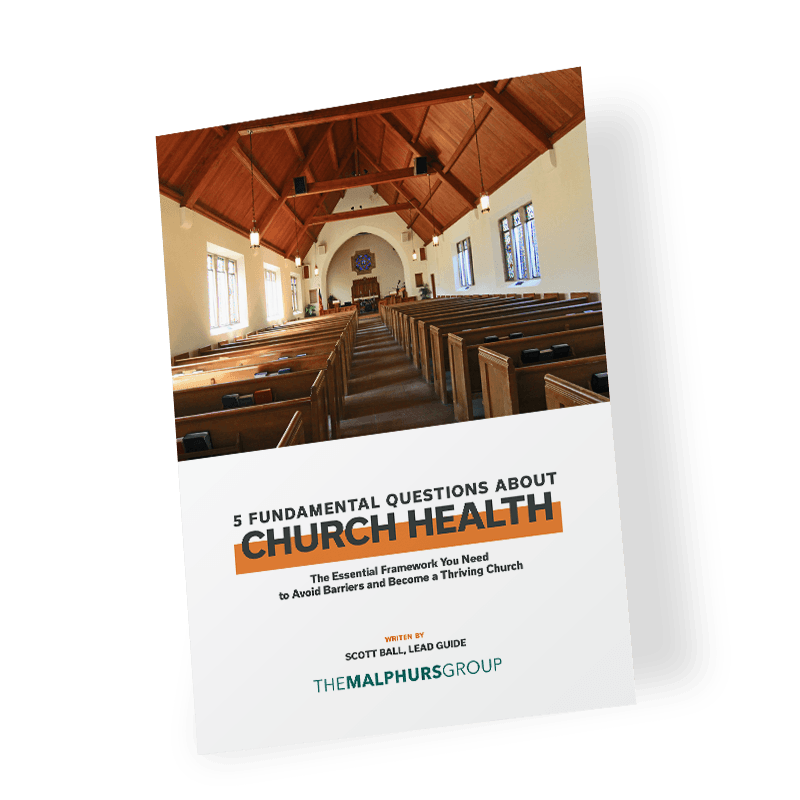The Church Revitalization Podcast – Episode 210
In the world of faith, there’s an undeniable truth – there’s nothing inherently wrong with being part of a small church. In fact, small churches often foster intimate communities where every member knows each other’s name, and the sense of belonging is palpable. However, small church size doesn’t have to equate to a small impact. It’s crucial to realize that even in smaller congregations, there lies an enormous potential for influence.
Small churches can indeed have a substantial impact on the world. They possess unique strengths that enable them to contribute significantly to the broader church community. They can be the driving force behind revitalizing other churches, planting new ones, or adopting satellite campuses. Most importantly, every church, whether small or large, should remain steadfastly focused on fulfilling the Great Commission – the mandate to share the gospel and make disciples of all nations.
Subscribe below to never miss an episode.
Defining the Small Church Syndrome
Before we delve into strategies for breaking growth barriers, it’s essential to recognize the symptoms of what we’ll refer to as the “Small Church Syndrome.” This syndrome can manifest in various ways:
Pastor-Centric Decision-Making:
In churches affected by this syndrome, the pastor often finds themselves at the center of every decision and ministry initiative.
Pastoral Overload:
The pastor takes on the lion’s share of congregational care responsibilities, from hospital visits to counseling sessions, leaving little room for strategic leadership.
Stagnation in Great Commission Work:
These churches struggle to initiate meaningful change centered on the Great Commission, often failing to reach new people with the gospel.
Program Over Purpose:
Instead of focusing on disciple-making and spiritual growth, these churches exist to maintain programs, regardless of their effectiveness in achieving their intended goals.
Inefficient Leadership Structures:
Inefficiencies plague the leadership structure, leading to bottlenecks and a lack of agility in decision-making.
Now, as we’ve defined the problem, let’s explore five powerful strategies for breaking these growth barriers and revitalizing your church.
Barrier Breaking Strategy 1: Rigorously Apply a Great Commission Focus
In the quest to escape the confines of the “Small Church Syndrome” and embrace growth and vitality, there is no more crucial step than rigorously applying a Great Commission focus to your church’s mission. Here’s how you can do it:
Your mission statement is the heartbeat of your church’s purpose. It’s time to assess whether it truly reflects the essence of the Great Commission. If it doesn’t already, consider reframing it to explicitly convey your commitment to making disciples and spreading the gospel.
It’s not enough for the mission statement to be a plaque on the wall. It must be a living, breathing declaration that resonates with every member of your congregation. Consistently communicate and reinforce the Great Commission as the driving force behind all your church’s endeavors.
The Great Commission should be your church’s ultimate yardstick for success. Evaluate the effectiveness of your ministries and programs through the lens of this mission. Are they contributing to making disciples? If not, be ready to make tough decisions, whether it’s revising, revamping, or letting go of initiatives that don’t align with your mission.
By infusing a Great Commission focus into your church’s DNA, you set a clear direction toward meaningful growth and impact. This strategy realigns your purpose with the core calling of the Christian faith, ensuring that your church’s influence extends far beyond its size.
Barrier Breaking Strategy 2: Shift Towards Process-Oriented Discipleship, not Program-Oriented Discipleship
In breaking free from the confines of the “Small Church Syndrome,” it’s essential to transition from a program-oriented approach to a process-oriented one when it comes to discipleship. Here’s how to make this transformative shift:
Unhealthy, plateaued churches often view discipleship through the lens of long-standing programs that may have lost their effectiveness over the years. In some cases, it’s even unclear what the precise goals of discipleship are. Healthy, growing churches, on the other hand, have a crystal-clear vision of what discipleship should achieve.
Instead of fixating on maintaining traditional programs, shift your church’s focus towards clearly defined discipleship outcomes. What specific spiritual growth, knowledge, and character development are you aiming for in your congregation? Communicate these outcomes effectively to your members.
Healthy, growing churches understand that programs are merely tools to facilitate the discipleship process. They don’t hold onto them at the expense of achieving discipleship goals. Be open to adapting, revamping, or even letting go of programs that no longer serve the purpose of fostering growth in your congregation.
Implement mechanisms to measure meaningful progress within your congregation towards these discipleship outcomes. This might involve tracking increased prayer engagement, deeper Biblical and spiritual friendships, improved Biblical literacy, and genuine life transformation.
By shifting towards process-oriented discipleship, your church moves away from a rigid, one-size-fits-all approach and embraces a dynamic, growth-centered mindset. This transformation empowers your members to embark on a personalized journey of spiritual development, ensuring that your church remains vital and responsive to the unique needs of each individual.
Barrier Breaking Strategy 3: Optimize the Leadership Structure for Empowerment
A key element in breaking the barriers of the “Small Church Syndrome” is to optimize your leadership structure for empowerment. Let’s explore how you can accomplish this transformation:
Effective leadership should enable quick decision-making while sharing authority. Small churches often struggle with two extremes: either they are too centralized, with the pastor becoming the bottleneck for decisions, or they are too decentralized, leading to political battles and bureaucracy.
Healthy, growing churches strike a balance by streamlining their leadership structure. This means ensuring that the fewest number of people, particularly those closest to the impact of a decision, are empowered to make decisions. Transparency and accountability remain essential throughout this process.
In a growing church, leaders can make small decisions swiftly while reserving the time and energy to contemplate major decisions thoughtfully. This agility and discernment enable your church to respond effectively to both everyday challenges and significant strategic opportunities.
By optimizing your leadership structure for empowerment, you break down barriers that stifle growth. This approach ensures that your church operates efficiently, making the most of its resources and talents, ultimately leading to a healthier, more vibrant congregation.
Barrier Breaking Strategy 4: Regularly Communicate an Inspiring Picture of the Future
Breaking free from the constraints of the “Small Church Syndrome” involves not only addressing immediate challenges but also casting a compelling vision for the future. Here’s how you can effectively communicate an inspiring picture of what lies ahead:
Small and unhealthy churches often become fixated on the status quo, limited by their current circumstances. In contrast, growing and healthy churches embrace a forward-thinking perspective. They recognize that God is capable of doing more than we can ask or imagine.
An inspiring future requires a shared vision. Work to unite your congregation around a compelling and God-inspired vision that motivates collective action. It should resonate with the hearts of your members and be a source of enthusiasm and commitment.
As leaders, it’s your responsibility to challenge your congregation to see their community through missionary eyes. Help them envision how your church can have a transformative impact on the lives of people in your community and beyond.
By regularly communicating an inspiring vision of the future, you infuse your church with purpose and energy. This shared vision becomes a driving force that motivates your congregation to actively work towards making it a reality.
Barrier Breaking Strategy 5: Learn How to Celebrate Progress
In the journey of overcoming the “Small Church Syndrome” and pursuing growth, it’s vital to not only set your sights on the destination but also appreciate the milestones along the way. Celebrating progress is a powerful tool for sustaining momentum:
Growth often occurs gradually, and sometimes it happens in leaps and bounds. Whether your church is experiencing steady, incremental progress or a sudden surge, it’s essential to acknowledge and appreciate the journey.
When growth is gradual, leadership plays a pivotal role in observing the progress, naming it, and celebrating it. Take the time to recognize and applaud achievements, whether they’re individual spiritual breakthroughs or collective milestones within the church.
In cases of rapid growth, it’s not uncommon for some members to push back or long for the past. It falls on the leadership to frame growth through the lens of optimism and the Great Commission. Help your congregation embrace change and understand that growth is a sign of vitality and effectiveness.
Celebrating progress fosters a positive atmosphere within your church, reinforcing the notion that growth is not only possible but also worth pursuing. It encourages your members to stay committed to the journey of breaking barriers and pursuing a healthier, more impactful church community.
–
Breaking free from the constraints of a “Small Church Syndrome” is a journey that requires commitment, vision, and strategic action. While it may not be an easy path, it is a path that holds the promise of transformation and revitalization for your church. As you’ve discovered in this exploration of five barrier-breaking strategies, there is a way forward to unlock your church’s full potential.
True growth, whether in numbers or spiritual depth, comes from doing the right things the right way over time. It is rooted in aligning your church’s mission with the Great Commission, redefining discipleship as a purposeful process, optimizing your leadership structure for empowerment, and regularly casting an inspiring vision for the future. Additionally, celebrating every step of progress along the way ensures that your congregation remains motivated and enthusiastic about the journey ahead.
At The Malphurs Group, we understand the challenges and opportunities that churches face. We are here to partner with you on this transformative journey. Our Strategic Envisioning and Leadership Pipeline Design process is designed to help churches navigate these strategies effectively. We believe in your church’s potential to become healthier, more vibrant, and more impactful. The first step to change is wanting to change, and we are here to support you every step of the way.
In closing, remember that your church, regardless of its size, can have a profound influence on the world. By embracing these barrier-breaking strategies and working together, you can unlock the doors to growth, vitality, and a renewed sense of purpose in fulfilling the Great Commission. Your journey toward a healthier, more impactful church begins now.
BONUS: Watch this episode on YouTube.


Scott Ball is the Vice President and a Lead Guide with The Malphurs Group. He lives in East Tennessee with his wife and two children. (Email Scott).

